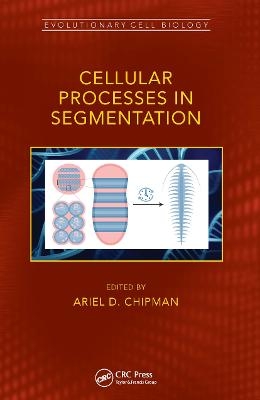
Cellular Processes in Segmentation
CRC Press (Verlag)
978-1-032-24235-4 (ISBN)
- Titel z.Zt. nicht lieferbar
- Versandkostenfrei innerhalb Deutschlands
- Auch auf Rechnung
- Verfügbarkeit in der Filiale vor Ort prüfen
- Artikel merken
The evolution of segmentation is one of the central questions in evolutionary developmental biology. Indeed, it is one of the best case studies for the role of changes in development in the evolution of body plans. Segmented body plans are believed to have appeared several times in animal evolution, and to have contributed significantly to the evolutionary success of the taxa in which they are present. Because of the centrality of the subject, and the continuing interest in understanding segmentation, this book offers an often overlooked focus on the cellular aspects of the process of segmentation, providing an invaluable reference for students of evolutionary developmental biology at all levels.
Key Features
Explores the role that segmentation has played in the diversity of animals
Documents the diverse cellular mechanisms by which segmentation develops
Reviews the independent evolutionary origins of segmentation
Provides insight into the general patterns of serial homology at the cellular level
Related Titles
Lynne Bianchi. Developmental Neurobiology (ISBN 978-0-8153-4482-7).
Jonathan Bard. Principles of Evolution: Systems, Species, and the History of Life (ISBN 978-0-8153-4539-8).
Gerhard Scholtz. Evolutionary Developmental Biology of Crustacea (ISBN 978-9-0580-9637-1).
Dr. Ariel D. Chipman is Associate Professor in the Department of Ecology, Evolution & Behavior of the Silberman Institute of Life Sciences at The Hebrew University of Jerusalem. He is the author or co-author of dozens of peer reviewed scientific journal articles. His research focuses upon the evolution of animal body plans with a focus on arthropod segmentation, integrating comparative embryology, the fossil record and genome evolution.
Dr Ariel D. Chipman is Associate Professor in the Department of Ecology, Evolution & Behavior of the Silberman Institute of Life Sciences at The Hebrew University, in Jerusalem. He is the author or co-author of dozens of peer reviewed scieitific journal articles. His research focuses upon (1)The evolution of developmental processes. Using comparative embryology as a tool for understanding evolutionary processes (2) Early stages in patterning the arthropod embryo and the evolution of the segmented body plan. (3) Evolution of the arthropod head and the processes differentiating head from trunk. (4) Genomics of novel model systems. (5) Historical biogeography of Israel, using the national invertebrate collection.
Section I: The Diversity of Segmentation. 1: Concepts of Seriality. 2: Diversity in Segmentation Mechanisms. Section II: Cellular Mechanisms of Segmentation. 3: Cellular Oscillators in Vertebrate Segmentation. 4: Cell Movement and Synchronization in Arthropod Segmentation. 5: Cellular Processes in Annelid Segmentation. 6: Scaling in Vertebrate Segmentation. 7: Stem Cells in Crustaceans. 8: Stem Cells in Leeches. Section III: Experimental approaches to segmentation. 9: Segmentation in Non-Segmented Phyla. 10: Live Imaging at the Cellular Level. 11: Regeneration as a Repeat of the Segmentation Process.
| Erscheinungsdatum | 14.12.2021 |
|---|---|
| Reihe/Serie | Evolutionary Cell Biology |
| Zusatzinfo | 54 Illustrations, color; 6 Illustrations, black and white |
| Verlagsort | London |
| Sprache | englisch |
| Maße | 156 x 234 mm |
| Gewicht | 580 g |
| Themenwelt | Naturwissenschaften ► Biologie ► Genetik / Molekularbiologie |
| Naturwissenschaften ► Biologie ► Zellbiologie | |
| Naturwissenschaften ► Biologie ► Zoologie | |
| ISBN-10 | 1-032-24235-3 / 1032242353 |
| ISBN-13 | 978-1-032-24235-4 / 9781032242354 |
| Zustand | Neuware |
| Haben Sie eine Frage zum Produkt? |
aus dem Bereich


